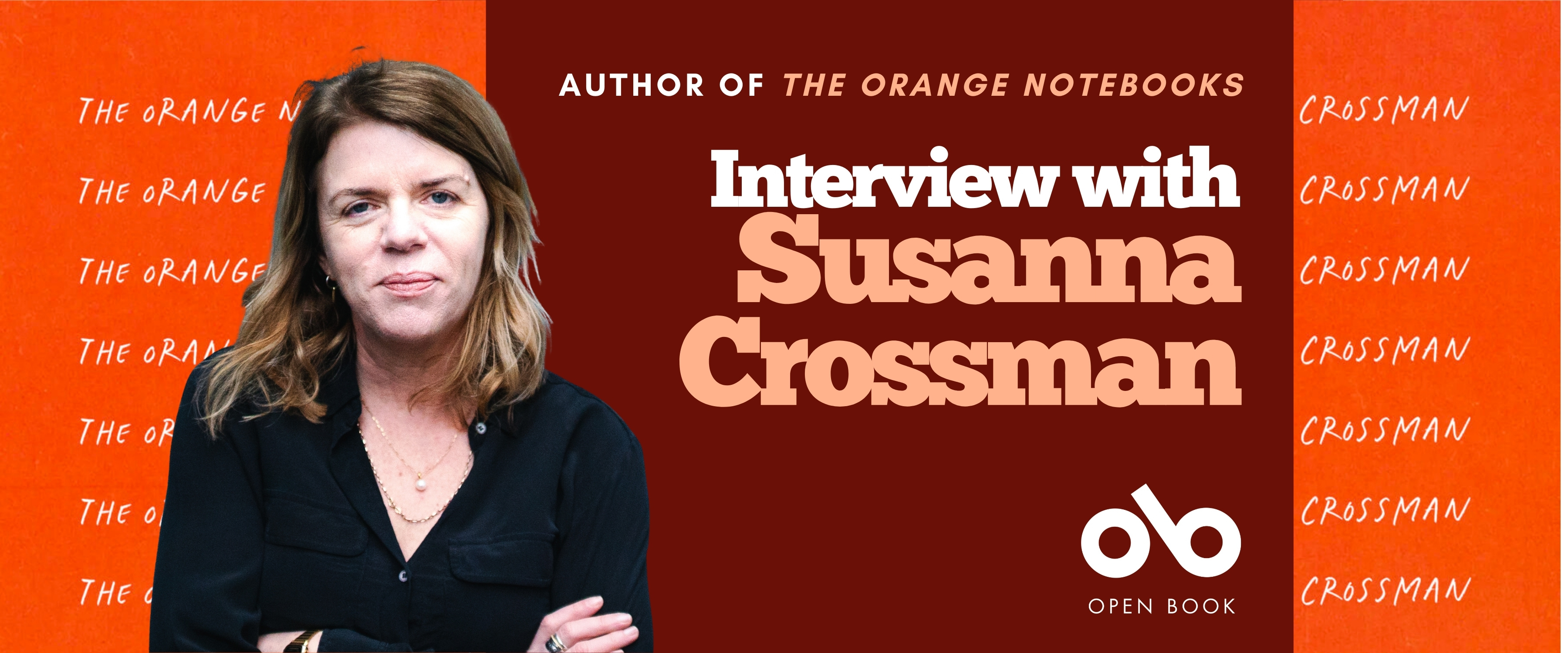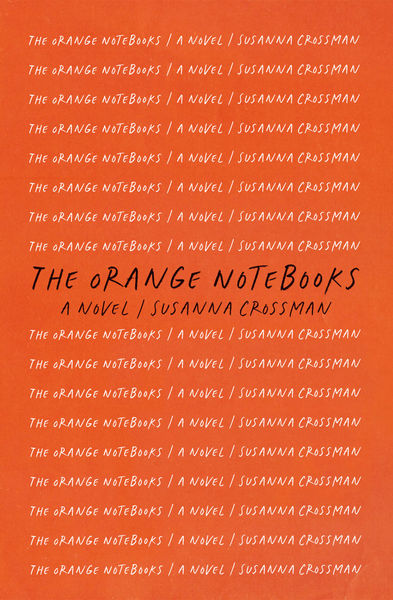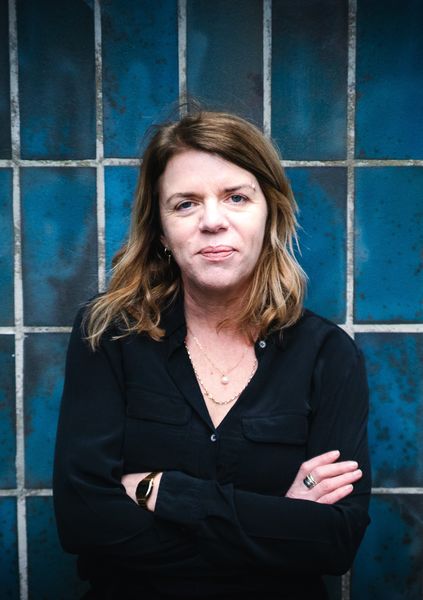A Grieving Mother Tries to Undo Death with Her Words and Stories in Susanna Crossman's THE ORANGE NOTEBOOKS
In her latest novel The Orange Notebooks (Assembly Press), award-winning writer Susanna Crossman delves into the raw terrain of grief, memory, and myth. Told through the journals of Anna, a mother confined to a French psychiatric ward. The story opens in the quiet hours of siesta, when Anna returns home with the crushing awareness that life has been altered forever by the death of her son, Lou.
Haunted by this loss, Anna begins to write. Filling a set of orange notebooks, she records fragments that reach across time. These included the story of her relationship with Lou’s Basque father, Antton, their fateful meeting on a ferry the day Princess Diana died, the rituals of mourning, and even the strange duplicity of the colour beige. Through these vivid details, Crossman gives voice to a character who is at once searching for her child and searching for language itself, all while trying to undo death with her words and stories.
Anna’s notebooks open into a more surreal voyage when she encounters Yann, a Breton sea captain. Together they sail toward the English Channel in an Orphic journey to recover Lou at the place where his story began. Crossman blends the intimate and the mythical in this moving exploration of motherhood, loss, and the fragile hope that love might bend the boundaries of death.
We're thrilled to share this Long Story Novelist interview with the author!
Open Book:
Do you remember how your first started this novel or the very first bit of writing you did for it?
Susanna Crossman:
I began writing The Orange Notebooks on a ferry in the middle of the English Channel. The sea has always fascinated me, it’s depths and surface, a place for dreams, adventure and escape. Over 80% of the sea is unexplored, a reminder of our humble human place on this planet. The sea flows through this novel. Anna, the main character, is passionate about the sea, she meets and falls in love with the father of her child, Antton, on a boat. When her son (Lou) dies she returns to the sea, an Orphic journey to the depths, to try and meet Lou again.
OB:
Did the ending of your novel change at all through your drafts? If so, how?
SC:
When I began writing the book, the end came to me quickly and it never changed. This is often the case for me when I write novels, I have the beginning and the end but I don’t how I am going to get there. As I write the story comes to me. It’s always a thrill to see what happens.
OB:
Did you find yourself having a "favourite" amongst your characters? If so, who was it and why?
Your CanLit News
Subscribe to Open Book’s newsletter to get local book events, literary content, writing tips, and more in your inbox
SC:
I am very attached to all the characters, Anna, her husband Antton, their son Lou and of course Yann ( the hardy Breton sailor Anna meets in the hospital). But I think one of my favorite characters is Deb (Anna’s great-aunt). She is a firm presence in Anna’s life– baking her cakes, bringing cash, wisdom and superstition. Aunty Deb is a huge fan of Princess Diana and she and Anna’s mum form their own private fan club, called themselves: LDG, Lady Diana Girls. Diana appears throughout the novel. I love Deb ( who is actually a hommage to my husband’s brilliant grandma) because she carries humor and magic realism into the book – a belief in red lipstick, having fun and the unknown. Deb’s recipe for honey cake is in the book and you can make it!
OB:
If you had to describe your book in one sentence, what would you say?
SC:
A story about the persistence of great love in the face of death.
OB:
Did you do any specific research for this novel? Tell us a bit about that process.
SC:
The book is the story of a mother grieving her dead child, and a reclaiming of the lost language of mourning. The themes of grief rituals, colors and bees are woven into the book as Anna tries to make sense of the tragedy that has struck her family. All of this involved reading, delving archives and fact-checking with entomologist experts on bees! The novel explores Basque mourning rituals (as Antton – Lou’s dad- is Basque), The Basque culture is remarkable as arguably the oldest and most genetically isolated ethnic group in Europe, and traditionally the place of the dead is firmly rooted in Basque life. I’ve visited the region often and also consulted anthropologists, discovering amazing facts like the ‘path of the dead’ a traditional right of way to carry coffins during a funeral procession over any piece of land.
OB:
Did you include an epigraph in your book? If so, how did you choose it and how does it relate to the narrative?
SC:
I have two epigraphs in the book: “Life always says Yes and No simultaneously,” from Rainer Maria Rilke, and “A touch of madness is, I think, almost always necessary for constructing a destiny,” from Marguerite Yourcenar. The latter relates to Anna’s breakdown and hsopitalisation she asks “How do you keep alive and loving when your world falls apart? The novel unfolds through her notebooks - part memoir, part philosophical inquiry, part attempt to assemble her shattered reality. Alongside my writing, I’ve worked in psychiatric units for 25 years and this quote is about accepting these unfathomable moments as Anna will find a sense of reconciliation and powerful hope.
Rilke’s quote recognises the complexity of human life in relation to death: that odd quandry of sentient human existence – the knowing that one day we’ll all be gone, yet the grief that accompanies absence. This is Anna’s battle, how to greive her son and live and love. Rilke’s words are a beautiful recognition of holding that balance, Rilke believes we should acknowledge death so that we can savour life every single day.
OB:
What if, anything, did you learn from writing this novel?
SC:
Writing this novel reinforced my belief that we need to understand our relationships with death to live life fully. We can’t shy away from our lost ones or grief but need to look to history and invent our ways of mourning. I’ve lost two sisters and have worked in hospitals for years accompanying staff and patients around these difficult themes with laughter, love and tears.
As Anna writes near to the end of the book,
"We needed to keep death in life. We couldn’t banish it underground. But we had to connect with each other, make our own new stories, mix the living and the dead. Invent our rituals. Embrace it all…."
___________________________________
Susanna Crossman is an essayist and award-winning fiction writer. Her acclaimed memoir, Home is Where We Start: Growing Up In The Fallout of The Utopian Dream, was published by Fig Tree, Penguin, in 2024. She has recent work in Aeon, The Guardian, Paris Review, Vogue, and more. A published novelist in France, she regularly collaborates with artists. When she’s not writing, she works on three continents as a lecturer and clinical arts-therapist. Born in the UK, Susanna Crossman grew up in an international commune and now lives in France with her partner and three daughters.






